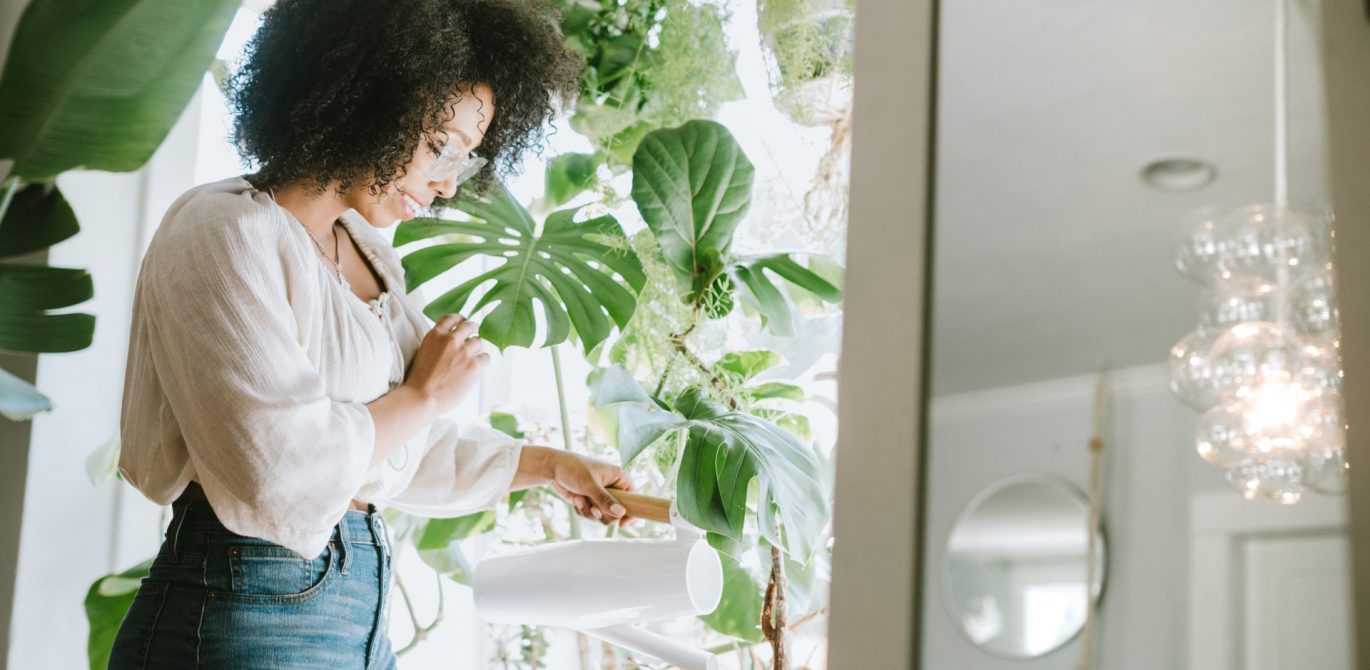Keen to be green? With our awareness of environmental issues rising all the time, it’s no surprise that more and more people are keen to make sure the inside of their homes are eco-friendly.
Whether it’s because you’re preparing to sell and want to present your property as squeaky clean in the greenest sense, or you simply want to minimise adverse impacts on your health and the environment in a recently purchased property.
In the winter months, we spend a lot of time inside, so it’s even more important to make sure that your interior promotes good health.
Whatever your motivation, there are plenty of ways to make your home environment eco-friendly. We’ve rounded up a few simple and surprisingly affordable things you can do to create an environment – that’s good for the environment!
Low-toxin paint
Commonly used household paint contains Volatile Organic Compounds, otherwise known as VOCs. Don’t let the ‘organic’ component of the term fool you: VOCs can be very harmful to your health.
And it’s not just fresh paint that’s of concern. VOCs can also ‘outgas’ many years after the paint dries, creating an adverse influence on the quality of the air within a property and a knock-on effect on its occupants.
Thankfully, VOC-free paint is not only available, but increasingly easy to obtain.
Low-toxin or VOC-free paint has the same finish as a standard paint, but minus the potentially dangerous chemicals. Low-toxin paint is a popular choice for babies’ nurseries and other bedrooms, and can also be a brilliant solution to those who have asthma, sensitivities to chemicals, pregnant women and those with auto-immune diseases.
Natural cleaning products
Cleaning products aren’t always the first thing we assess when it comes to their ingredients and components, even though we use them every day. By switching your normal cleaning products for natural alternatives, you can reduce the number of chemicals used in your home every day.
As a bonus, many natural products are extremely cost effective. In fact, you’ll find some of them in your pantry already. Baking soda, borax, white vinegar, salt and lemons are just some of the items that you can put to work. Peppermint, tea-tree and lavender oils all have antibacterial and antimicrobial properties as well as making your home smell glorious.
Another alternative is soapberries, which can be used in the laundry to wash clothes and even for your hair in the shower.
There are plenty of recipes online for making up your own surface sprays and disinfectants, or have a chat in your local health food store for more tips.
Upcycled furniture
Every new product we consume, from furniture to accessories, uses up the earth’s resources. And according to the Bureau of Statistics, every Australian contributes around two tonnes of waste to landfill every single year.
For a real impact on the environment, try reducing what you buy and dispose of. Who says everything has to be new? Look around your home and reflect on what can be given a new purpose. This also means saving items that could have otherwise ended up in landfill – a win for you and the precious environment.
As well as saving funds, up cycling pre loved stuff can add charm to your interior. Try repurposing a retro buffet table into a storage solution, or transforming an old cupboard with a coat of fresh white paint. Another hot trend is collecting mismatched chairs to arrange around a dining table – why not try it yourself?
Have a chat to your local second-hand store, scope out online opportunities on re-selling apps and seek out items from loved ones who are having a clean out. You’ll be surprised what you can find.
Indoor plants
Too cold to go outside? Bring the plant life in! Plants improve the air quality in your home by absorbing carbon. Some plants, like the popular and hardy spider plant, will even help clean up those VOCs in the air.
Use fragrant plants instead of chemical air fresheners to scent your interior: try a dwarf kaffir lime or lemon verbena for a fresh citrus scent. Lavender in the bedroom will promote restful sleep.
